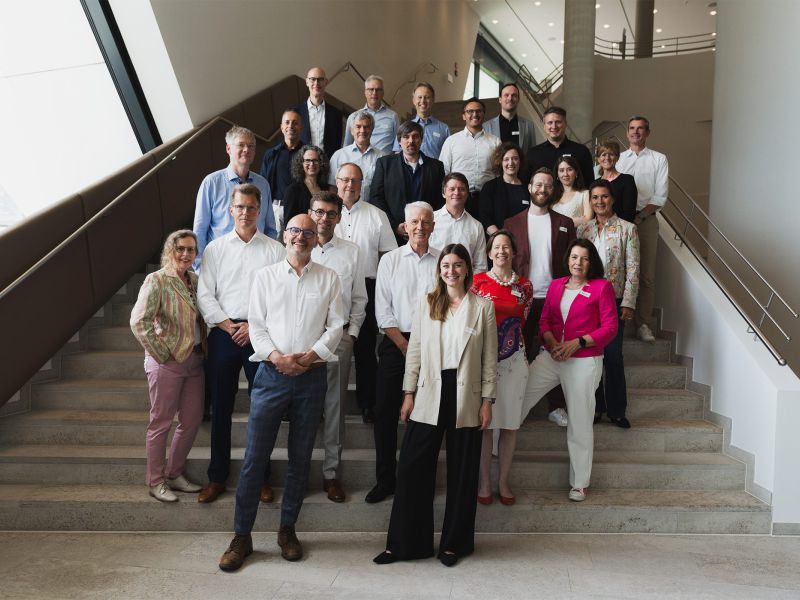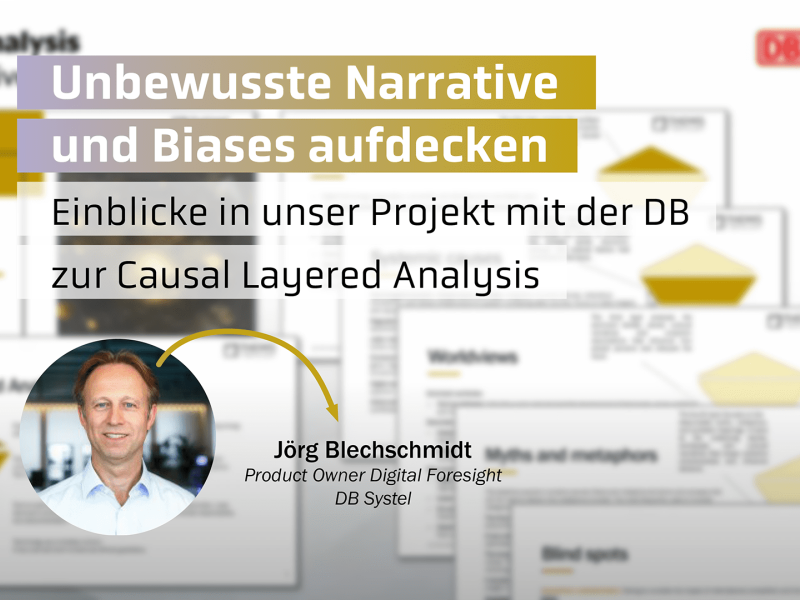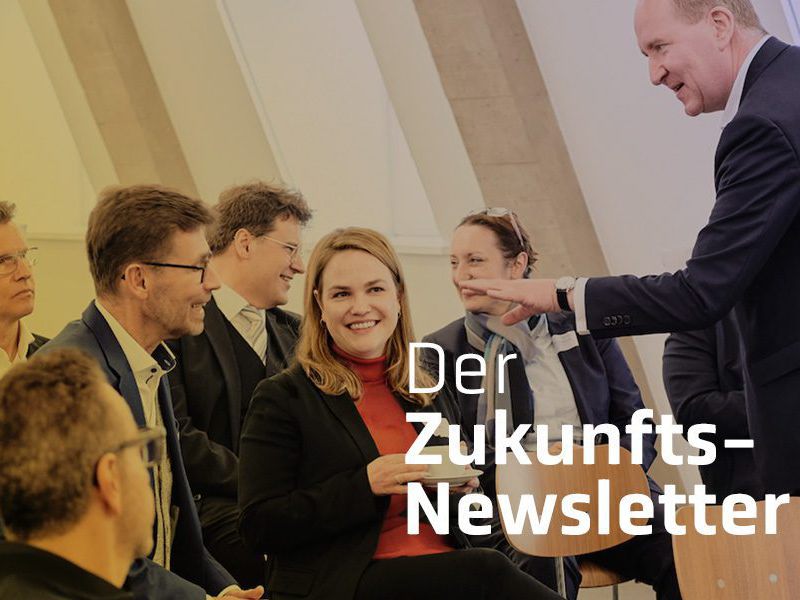Methods of strategy planning with foresight

Why do companies need a strategy?
The purpose of strategic planning and design in companies is to create a clear and long-term direction to achieve the company’s goals and visions. Through the strategic planning process, companies set a framework for their decisions and activities. Strategic planning helps to set a clear direction and align all areas of the company towards common goals. It supports the identification of strengths and weaknesses, opportunities and risks and enables companies to react proactively to changes in the business environment. In addition, strategic planning promotes communication within the organization and enables employees to identify with the company’s vision and make their individual contributions to keep the entire organization on track for success.
What role does corporate foresight play in strategic planning?
Corporate foresight can support and complement strategy development in many ways. In addition, scenarios developed in the foresight process help to review existing strategies. Themis Foresight works with companies to develop future-proof strategies. We use methods such as backcasting, scenario analysis, Delphi or causal layered analysis. We create images of the future or subject strategies to a stress test with the help of future scenarios.
Various strategic approaches have been developed over time to meet the challenges of complexity and uncertainty. In this article, we will look at some of these approaches. Corporate foresight can usefully complement and support some of these approaches.
Foresight-based strategic planning
The first step is to evaluate future trends and environmental developments (STEEP) in a Delphi study. Based on this, companies develop various future scenarios. These scenarios link future developments with current conditions. They illustrate trends, important decisions, groundbreaking changes, events and their possible consequences. From this, companies derive a desirable yet realistic picture of the future for themselves – a polar star, so to speak, that guides the organization. In a backcasting process, necessary steps for current planning are derived from the future. This results in a short, medium and long-term strategy.
Themis Foresight supports companies in this process. More about our methods.
Hoshin Planning
Hoshin planning, also known as policy management or hoshin kanri, is a Japanese approach to strategic planning that promotes the alignment of corporate goals and measures. A vision is developed and from this, top-down goals are coordinated by the organization at all levels. The clear linking of strategic goals with operational activities supports the alignment of the entire organization and enables better implementation of the strategy, as all employees are focused on the same goals.
Themis Foresight helps companies to develop a vision of the future and thus to create a desirable but realistic vision for their future that takes into account both trends and developments in the industry as well as environmental factors. This vision of the future forms the basis for a company’s further strategic and operational activities that apply the Hoshin planning method.
Mintzberg strategy bridge
The Mintzberg strategy takes up seven different perspectives that managers should adopt in their strategic orientation. The focus of this planning method is the diversity and complexity of strategic thinking. The perspectives are: 1. looking backwards (what worked, what didn’t?), 2. looking sideways (competitors), 3. looking upwards (analysis of the overall market and system, STEEP/PESTEL), 4. looking downwards (strengths, weaknesses and financial aspects of the company), 5. looking forwards (future scenarios), 6. looking beyond (future developments, uncertainties), 7. perspectives of strategy implementations.
Corporate Foresight focuses primarily on points 5 and 6. In scenarios, we support companies in working out probable, possible and desirable futures, playing through unthinkable futures and examining their impact on their business model. In future scenarios, we develop desirable but realistic visions for companies.
Strategic triangle
The strategic triangle is a model that represents the three main strategic objectives of a company: Company (added value), Market (differentiation) and Customers (target group). The challenge is to reconcile these objectives in order to achieve a sustainable competitive position.
Corporate foresight can help companies to incorporate trends and developments over the next decade(s) into their market analysis and to evaluate where the target group is heading in the future, which is particularly beneficial for long-term product developments.
Blue Ocean Strategy
The blue ocean strategy aims to open up new, untapped markets instead of fighting in contested “red oceans” where the competition is also active. By creating innovative products or services that meet customer needs in new ways, companies can successfully tap into blue oceans and gain a competitive advantage.
Our corporate foresight is aimed precisely at tapping into the blue oceans of the future at an early stage and occupying them for ourselves. With the help of images of the future, analyses of customers and target groups of the future and scenario development, we open up new market opportunities for your current business model.
Porter strategy / competition matrix
Michael E. Porter developed the Porter strategy named after him, which focuses on a company’s competitive strategy. He described two basic strategy options: Cost leadership and differentiation. Companies can either focus on cost leadership in order to offer products or services at lower prices, or on differentiation in order to stand out from competitors through unique features or quality. The third competitive strategy he mentions is focus, i.e. the niche strategy.
Themis Foresight uses foresight methods to identify trends and developments in future markets so that companies can differentiate themselves from their competitors not only in the short term but also in the medium and long term.
EKS strategy
The EKS strategy (bottleneck-focused strategy) was developed by Wolfgang Mewes and focuses on the identification of minimum factors or bottlenecks. Mewes is one of the pioneers of cybernetic management theory in Germany. The four principles of the EKS strategy are holistic specialization (focusing on the smallest possible target group with the same problems, demands and needs), the minimum principle (solving problems that correspond to the current bottleneck of this target group), intangibles before tangibles (where is value created?) and benefit maximization (extent of product benefit).
The EKS strategy offers a pragmatic and efficient way to increase the company’s effectiveness and competitiveness.
In Delphi studies, we examine what drives the customers of the future and what problems and needs they will have in the medium and long term. This enables us to derive which future product benefits and value proposition your company must fulfill in order to gain a competitive advantage in the long term.
Conclusion
All of the strategic approaches presented have their advantages. The approach of developing the strategy from the future is particularly promising for companies that want resilient strategies in volatile and complex times. Companies that use foresight methods and consider different scenarios can react better to changes. Foresight makes it possible to identify opportunities and challenges at an early stage and proactively open up new markets or develop innovative products and services.
The combination of foresight and strategic planning creates a solid foundation for long-term success. In a rapidly changing world, integrating foresight into strategic planning can make the difference between success and failure.
Themis Foresight is happy to support companies in all sectors with its many years of expertise.
How can we support you with our Foresight?
Arrange an individual meeting with our managing directors to find out how we can best support you.





